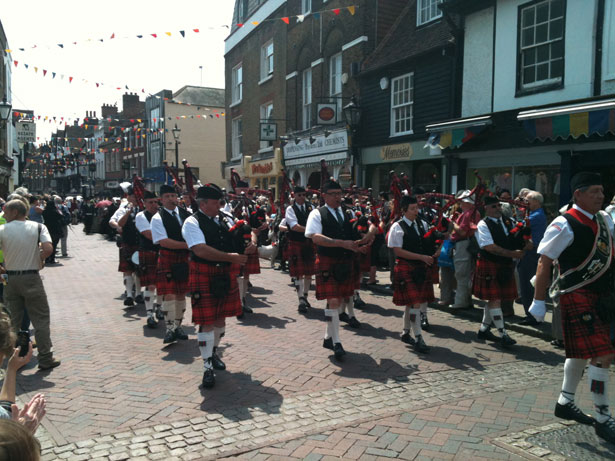
It's all the fault of an Englishman.
The great kilt, or breacan, which was first worn during the 1500s, had enough fabric in the back of it to cast over a shoulder or pull up over the head. It was warm, but could get in the way a bit if you were working.

The philibeg, or walking kilt (the sort usually worn today) was invented by Thomas Rawlinson from Lancashire in the 1720s. His acquaintance Iain MacDonnell, chief of the MacDonnells of Inverness, wore it to visit his workers, and from there its use spread very quickly.
As for the kilt's traditional tartan fabric design, that has a special language all of its own.
 This is Fraser of Boblainy tartan, a pattern from the 1700s. You describe it as: B/4 R56 G28 B28 R/4.
This is Fraser of Boblainy tartan, a pattern from the 1700s. You describe it as: B/4 R56 G28 B28 R/4. B, R, and G are Blue, Red, and Green; the numbers are the numbers of threads of each colour, counting across (or down) the pattern; the / signs show the lines of symmetry.
See? Simple, but brilliant.
So where can you spot a kilt? In Scotland, of course, but there are also Irish, Welsh, Cornish, Manx, Breton and Galician kilts.
Pipe bands wear kilts, too, though these are often plain in colour. You might see a pipe band more or less anywhere from the USA to Pakistan.
If you should come across some Lacrosse players then they may well be wearing kilts, too.
Goths quite like kilts; sci-fi loves them; even David Hasselhoff has been known to wear one.
For the rest of us (the ladies at least) we can kilt our own clothes by pulling the back hem of a long full skirt up between the legs and tucking it into the front of the waistband. It makes using a skipping rope much easier.
So there we are. The walking kilt: an English idea made beautiful by the Scots.
What a partnership, eh?
Spot the Frippet: kilt. This word comes from Scandinavia. There's a Danish word kilte, which means to tuck up, and the Swedish kilta means lap.
No comments:
Post a Comment
All comments are very welcome, but please make them suitable for The Word Den's family audience.